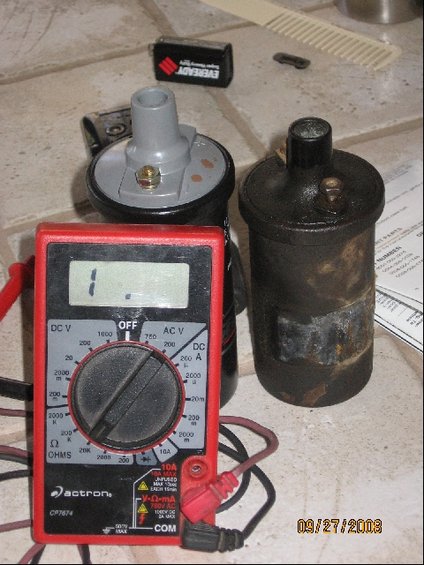Can you post a pic of the instrument that you are using???
But it sounds like yours is not the "auto-ranging" type.
So set the resistance scale using the selector knob to "20". Most likely that is a "20 ohm scale". That will read from zero resistance (0.000) depending on how many decimal places the display can show, to 20.000ohms, or "20 ohms". That is the scale you want to use. If the instrument is turned on, the 20 ohm scale is selected, and the two probes are not shorted together, then the display will read normally "ol or "ol" which means "open line" or infinity.
Then put one probe on one terminal of the coil, and the other probe on the other terminal, both probes must make perfect contact! The reading on your meter May flash" or scroll up and down but should finally lock down. The reading will be the actually primary winding resistance in the coil you are testing! The sv coil will read between 1.4 and 1.9 ohms if it's ok. The I-4 coil will read between 2.8 and 3.2 ohms or so if ok. Again a few tenths of an ohm one way or the other is not an issue!
If in fact you have a reading of 0.000ohms, that indicates "shorted turns" of the primary winding, lowering the overall resistance below usable specification. If the resistance is greater than say 3.2ohms, then the current draw/saturation will not be suitable for that distributor! If the reading is "ol", that indicates an open primary winding and the means the coil is not useable!
We must see a pic of the instrument you are using to fully understand what tool you are using and to help in explaining how to use it! They are not "all the same"!



